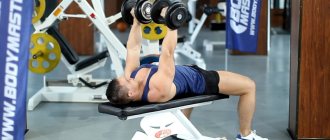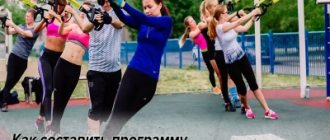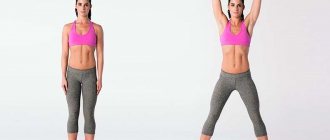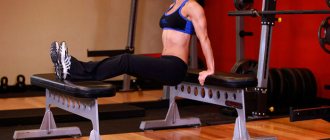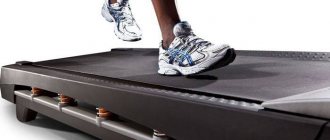Developed pectoral muscles emphasize the overall athletic build. Much in this regard depends on genetics, but it is quite possible to increase their volume.
You need to choose the right exercises, as well as follow general recommendations regarding gaining muscle mass, affecting whole-body training, regimen and nutrition.
It is much easier for men to pump up their chest muscles than for women. Women will not be able to increase the volume of this area through physical exercise, but they will tighten their muscles and tone them.
In any case, a special approach to training and other factors is required.
How to work correctly with the muscles of the sternum with a barbell, dumbbells, and parallel bars
When starting chest development exercises, it is important to understand how to properly load the muscles to get maximum benefit. There are a few tips to follow:
- First of all, perform exercises with a barbell, for example, a bench press or with dumbbells (dumbbell press);
- As auxiliary movements, you can use fly-outs or isolated exercises on simulators;
- to increase volume you need to do 2-4 exercises of 6-15 repetitions. You should not focus on high-repetition movements;
- to develop the chest, a wide and medium grip is used; with a narrow grip, the triceps are more involved in the work;
- parallel bars can be used as a main and auxiliary exercise.
The technique used to perform the exercises will depend on the type of movement. So, for example, the bench press is performed as follows:
- the athlete lies down on the bench so that his eyes are opposite the bar;
- grab the barbell with your hands, wide or medium, evenly from each edge;
- the rod rises from the racks independently or with the help of a belayer;
- first movement - the barbell lowers to the chest while inhaling;
- after a short pause, the projectile rises upward, with a sharp movement with maximum effort, while exhaling;
- the movement is repeated the required number of times.
The dumbbell press is performed in the same way, the only difference is that the dumbbells are either held straight, or their trajectory changes when moving up and down (at the top point they stand “in a row”, and at the bottom they are parallel to each other).
When doing dips, you can either use additional weight or do without it, it all depends on your level of training. The technique is approximately as follows:
- the athlete stands near the bars and climbs on them with outstretched arms;
- first movement - the body lowers as low as possible while inhaling;
- second movement - the body rises as you exhale.
Important! During exercises on the uneven bars, your arms should be kept straight, without allowing vibrations in the area of the elbows. With a wide stance, the load falls more on the pecs, and with a narrow stance, it shifts to the triceps.
At the beginning, it is quite difficult to understand how to do it correctly with a barbell, how to do it correctly with dumbbells and on parallel bars, so it is better to use minimal weights until you fully master the technique. This will ensure minimal risk of injury.
Be sure to watch: “Making” breasts without surgery and diets: exercises for the sternum muscles for women and girls Recommendations on how to pump up a girl’s chest and quickly tidy up a man’s sternum muscles at home Features of chest-back training in one day: an exercise program for beginners and advanced athletes Exercises that will help pump up the sternum muscles for a man
Presses
This is the basis of a chest workout. Presses are multi-joint exercises that involve several areas of the body at once. When doing this, it is important to consider several points:
- Hand position. With a wide grip, the emphasis is on the front delts. The narrower the upper limbs are, the higher the load on the triceps. The best option is to place your hands 15-20 centimeters wider than your shoulders.
- Bench position. The angle of inclination affects the areas being worked. The optimal values are 30 and 45 degrees. It is not recommended to tilt the bench more strongly, since the pectoral muscles are completely “switched off” from the process.
- Body position. We bring the shoulder blades together as strongly as possible, and form a slight deflection in the lower back.
General technique for performing different types of bench press:
- We lie down on the bench. We rest our feet completely on the floor.
- We take a barbell or dumbbells in our hands.
- Slowly, without jerking movements, lower the projectile down.
- We perform the movement only with our hands, without involving the back, neck and other parts of the body in the process. This not only increases the risk of injury, but also completely reduces the effect of the exercise.
- At the lowest point, the projectile should lightly touch the chest or be at its level.
- Without breaks, immediately press the barbell or dumbbells up.
- At the top point, do not bend your arms completely. A slight bend in the elbows ensures that there is no load in the triceps area and constant chest work.
Interesting fact. If you have problems with pressure, it is not recommended to do incline presses.
What exercises for home and gym should be included in the program for pumping up the pectoral muscles?
Pumping the chest muscles and working on mass is carried out through a series of exercises. The most popular basic movements when training in the gym are:
- bench press on a horizontal bench;
- incline bench press;
- dumbbell press on a horizontal and inclined bench;
- raising dumbbells on a horizontal and inclined bench;
- presses in simulators;
- dips;
- crossover.
This is the main backbone on which the training program is built.
Breast development at home is done using push-ups. They should be the main exercise. Such exercises are performed according to various schemes, different positions of the arms and legs are combined, and additional weight is used (for example, in a backpack).
You may also be interested in: Chest exercises at home
How to train your chest correctly
Before pumping up your chest with a barbell, you should know a few rules that need to be taken into account when performing exercises:
- Before starting training, a thorough warm-up should be carried out.
- In order to ensure the tightest and most reliable grip on the bar, you need to sprinkle your palms with talcum powder or use gloves.
- The starting position must be correct: the legs rest firmly on the floor, the shoulder blades are brought together, the lower back is slightly arched, the buttocks do not come off the bench during the exercise.
- Determine your optimal grip. To do this, you need to lie on the floor and spread your arms perpendicular to your body, while bending your elbows at right angles. This is the grip width you should use during training.
- When performing exercises, use a natural trajectory of movement. Lower the bar to your lower chest, after which, without pausing, you need to squeeze the weight up until your arms are completely straightened.
Muscles involved when bench pressing a barbell
We also recommend studying this topic:
How to pump up deltoid muscles at home?
17406 0 0
Readers found these materials useful:
- Push-ups for the upper and lower pectoral muscles
- How to pump up your chest on the uneven bars: a set of effective techniques
How many times a week should you exercise
When creating a training program, you need to determine how quickly the muscles recover after performing exercises. These processes are individual in nature, some need a week to recover, others need several days. Without going into details of the stages of the process, we can conclude that it is necessary to perform movements on the pectoral muscles once or twice a week.
At the beginning of training, it is best to base yourself on your own feelings. The muscles will ache, this is a normal reaction to training. In case of acute pain, it is not worth repeating the load on the muscle group; it is better to let the body complete the processes.
Program for pumping the muscles of the sternum
Training should be based on a scheme, that is, a training program. The plan is drawn up at the beginning of classes and adjusted based on your own feelings, progress, recovery speed and other factors.
The plan will be different for beginners and more experienced athletes. At first, it is recommended to perform fewer exercises, giving preference to basic, multi-joint movements. Then the isolated ones are included, and other diversity is introduced.
For newbies
When we pump our chest, other muscles come into play. This factor must be taken into account when creating a training program. For beginners, it is better to train according to the principle of a three-day split, focusing each workout on two or three muscles.
A sample plan looks like this:
| Workout 1 | Legs and shoulders. 2-3 leg exercises (for example, squats, lunges and machine leg presses), then 2 shoulder exercises (standing barbell press and seated dumbbell press) for 3-4 sets of 6-12 reps. |
| Workout 2 | Chest and triceps. Bench press 4 sets of 8-15 reps. Incline dumbbell press, 3 sets of 8-15 reps. Dumbbell flyes, 3 sets of 10-12 reps. Triceps on the block, 4 sets of 10-15 reps. Dips, 4 sets of 10-12 reps. |
| Workout 3 | Back and biceps. Option: deadlift, barbell row, pull-up, biceps curl, dumbbell curl on a Scott bench. 3-4 sets of 6-12 repetitions. |
Training can be alternated differently. For example, the pecs can be combined with the back, shoulders, and so on. The main thing is that the body has time to recover. Before pumping the lower chest separately (or the upper), it is worth paying attention to the overall development, then the weaknesses will become clear, and the program will change depending on them.
For advanced
More experienced athletes can pay more attention not to general training, but to individual parts of the pectoral, isolating movements. But before training the lower part of the sternum muscles or, conversely, the upper part, it is worth performing basic exercises, only then moving on to special movements.
A chest/triceps training day might look like this:
- bench press, 4 sets of 10-12 reps;
- dumbbell press, 3 sets of 10-15 reps;
- Incline bench press, 3 sets of 12-15 reps;
- crossover, 3 sets of 12-15 reps;
- French press, 4 sets of 12 reps;
- bent over triceps extension, 3 sets of 10-12 reps.
Another training option for combining the load on the chest and shoulders is as follows:
- bench press with a barbell, 4 x 10;
- Smith machine press, 3 x 10;
- crossover, 3 to 12;
- dumbbell flyes, 3 to 12;
- standing barbell press, 4 x 12;
- Arnold press, 4 to 12-15.
There are quite a lot of options. For example, a five-day split can be used, when training is carried out 5 times a week, then a separate day is devoted to the chest, approximately 5-6 movements are performed.
You may also be interested in: How many times a week should you exercise?
Basic exercises for pumping up the chest
Basic exercises with a barbell for the pectoral muscles involve pressing on a horizontal and inclined bench. Horizontal presses increase muscle strength, stimulating their growth, and inclined presses allow you to work the entire volume of muscle fibers.
Advice! To pump up the upper chest, you need to use a bench with a positive incline within 20-30 degrees. In this case, it is necessary to use the bench press with a narrow grip. To clearly define the lower chest, use a bench press that has a slight negative slope.
Correct execution of bench presses
The entire set of exercises with a barbell for the pectoral muscles should include 5-6 sets of horizontal and 4 sets of inclined presses. To effectively increase muscle strength, 6 repetitions is optimal.
Bench press on a horizontal bench
This exercise is basic for the chest muscles and affects the entire upper body. This press will allow you to pump not only the entire area of the pectoral muscles, but also the triceps, the anterior heads of the deltoid muscles, and also the back muscles.
In order to perform the exercise correctly, you must follow the following rules:
- Position yourself on a horizontal bench so that the bar is in front of your eyes.
- Your back should be slightly arched so that your pelvis does not open away from the bench.
- The grip should match the width of your shoulders. The legs are in support.
- Now remove the barbell from the racks and slowly, while inhaling, lower it to the center of the pectoral muscles.
Advice! When lowering the bar, try not to flare your elbows out to the sides to fully engage your pectoral muscles.
- As you exhale, return to the starting position.
This exercise should be performed with full amplitude so that your head does not leave the bench.
Advice! It is recommended to perform this exercise in a pyramid, when, by reducing the number of repetitions, you increase the working weight.
Muscles used in the basic bench press
You can perform bench presses on a horizontal bench with different grip widths. With a wide grip, the load on the triceps decreases, and the load on the outer area of the pectoral muscles increases. A narrow grip, on the other hand, places the load on the inner parts of the pectoral muscles. Lowering the barbell closer to your neck will provide a better stretch for your pectoral muscles.
Close grip bench press
The close grip pectoral press has approximately the same effect on the pecs, triceps, and deltoids.
To perform the exercise correctly, follow these recommendations:
- Lie down on a bench, grasping the bar with an overhand grip with a distance between your hands of 15–20 cm.
- After removing the bar from the racks, straighten your arms up so that your shoulder joints are under the bar.
Close grip bench press
- Now slowly lower the barbell until the bar touches your upper chest.
Important! At the bottom, your elbows should be at a 45-degree angle to your body.
Variations for performing this exercise include the incline bench press and the use of different grip widths.
Incline Bench Press
A strong impact on the upper part of the pectoral muscles occurs due to the bench, which is installed at an angle of 45 degrees. Also, the exercise has a secondary effect on the triceps and deltoid muscles.
The incline bench press should be performed in several stages:
- Take your starting position on the bench.
Correct execution of the incline bench press
- Grasp the barbell with an overhand grip, then remove the barbell from the racks.
- Lower your hands to the level of your collarbone.
- Return to the starting position.
Advice! When performing this exercise, you need to spread your elbows to the sides.
Various inclinations of the bench are also possible here. For example, with an inclination of 30 degrees, the load on the pectoral muscles increases, and on the delta, on the contrary, decreases.
Head down incline press
This exercise targets the outer and lower parts of the pectoral muscles. To implement it, you must adhere to the following recommendations:
- Lie on an incline bench set at an angle of 15-30 degrees, head down.
- Grasp the barbell with an overhand grip, then remove it from the racks.
Reverse Incline Bench Press
- Raise the barbell up until your arms are perpendicular to the floor.
- Lower the barbell to the level of the middle of the pectoral muscles.
- After the bar touches your chest, lift it along the same path.
The video shows what exercises you need to do to pump up your chest with a barbell.
Important! You should not overuse this exercise, otherwise your breasts may become saggy.
This material will be perfectly complemented by the following publications:
- Chest training program: split programs from professionals
- Exercises to pump the upper pectoral muscles
How to quickly develop muscles: pro tips
The development of chest muscles requires a special approach. Progress can be achieved both at home and in the gym, but, according to professionals, a program for pumping up these muscles should preferably contain exercises with a barbell and dumbbells.
Professionals, especially coaches and experienced athletes, advise starting movements with heavy exercises that affect the chest as a whole and do not focus on any part. This is a barbell press, dumbbells, parallel bars, and in home exercises - push-ups. For women, it is better to do incline presses to develop the upper chest, which will allow it to “tighten” it somewhat.
Important! According to the pros, it is better to complete classes with isolating movements, which will help consolidate the result. Also, do not forget about the restoration of the body, which is carried out through proper nutrition and adherence to the regime.
Alexander Kodzoev, bodybuilder
A well-known bodybuilder in Russia uses a five-day split program, devoting a separate day to the chest. Depending on the season, either heavy multi-joint exercises or isolation exercises can be performed on this muscle group.
He advises non-professionals to focus on presses, as they will allow you to work the chest as a whole and only then move on to isolated movements. It is also worth correctly distributing the load, training the body as a whole, comprehensively and harmoniously, and not focusing only on chest training.
Dmitry Yashankin, bodybuilder
Dmitry Yashankin is known not only for his professional career, but also as the author of many training videos and techniques. He advises approaching body training consistently, taking into account the characteristics of the body, strengths and weaknesses. But in any case, you need to train the entire body.
In his opinion, it is better to train the chest with bench presses, then move on to movements on machines and other auxiliary exercises. For beginners, it is better to perform 2-3 exercises and allow the body to recover well, only strengthening the program over time.
Ekaterina Usmanova, fitness bikini
The athlete not only competed in fitness bikini, but also successfully participated in bench press competitions. She believes that even girls should do bench presses, as it will help harmoniously develop muscles and tighten their chest. Particular attention should be paid to the bench press of barbells and dumbbells on an incline bench, but also include fly-outs and movements on machines in the program.
Main conclusions
You need to train your chest consistently and in a variety of ways. It is necessary to provide the body with a load adequate to the level of training, and it should increase over time, gradually. It is best to choose basic, heavy movements, especially at the beginning of training.
The best exercises for chest development are considered to be the bench press, both barbells and dumbbells, as well as flyes, dips and a whole range of exercises on machines. Don’t forget about training the muscles that are auxiliary for chest movements, such as the back, triceps, abs and shoulders.

